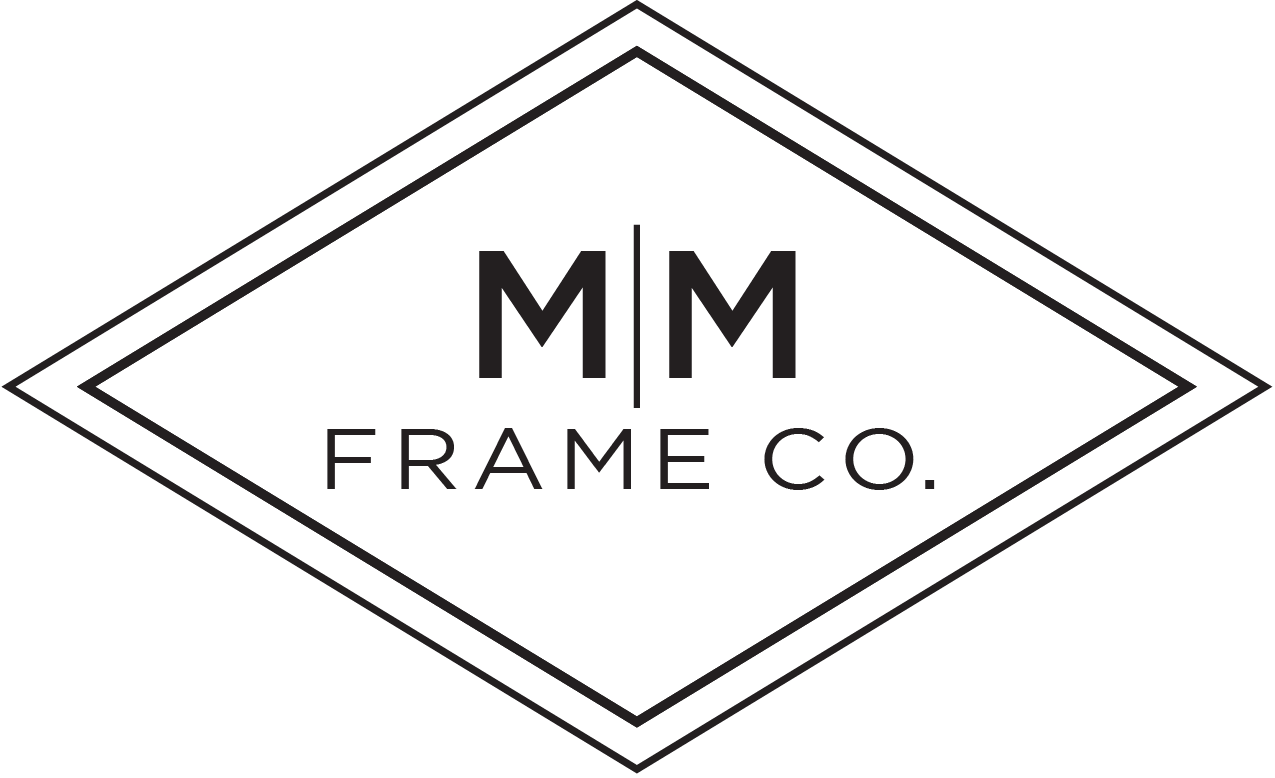Do's & Don'ts
Before Framing: Storing Your Artwork
Since most customers don’t come in for framing immediately after acquiring a work, please make sure that the artwork is properly stored in a folder, protective covering, or tube. Rolled pieces can be seriously damaged by using rubber bands, tape, and paperclips – even a gentle squeeze! Improper storage/shipping has ruined some great artworks – don’t let yours be one of them.
Protecting the Art
Many materials commonly used for framing – paper mats, cardboard, and the like – contain acid that will gradually destroy or damage the artwork they’re coming into contact with. MM Frame Co can provide archival acid-free mats and backing boards that help protect art from the damaging effects of time and from pollutants that cause yellowing, fading, and deterioration.
In addition to archival materials, glazing can also protect your artwork from damage. Glazing refers to the glass or acrylic material covering the artwork. There are many variations of glazing including: regular clear glass, anti-reflective, non-glare, and conservation glass (specially formatted to help filter out UV light). Museum glass is also available, and offers conservation-quality protection with the added benefit of being virtually invisible. Acrylic glazing products come in non-glare and UV-filtering varieties. Since it is lighter and shatterproof, acrylic is ideal for oversized pieces, frames hanging in children’s rooms, items that will be shipped, and pieces that will be displayed in earthquake-prone areas. Acrylic, while lighter in weight and safer than glass, requires soft cloth and non-abrasive cleaner. MM Frame Co can help you decide which glazing option is the right one for your piece.
Mats: Laying the Foundation
The mat is a window-cut material placed around an image within a frame. A mat serves as a spacer, allowing the artwork to expand and contract with changes in humidity. It also makes the overall size of the final piece bigger, providing a space for the eyes to rest between the art and the frame. Mats are made of a variety of materials and provide an almost unlimited range of colors and textures to help complete the final piece.
Mounting Artwork Properly
Dry and wet mounting is the most appropriate method to use for posters and photographs. It bonds artwork to a board to prevent it from bubbling or waving. Pieces of value are generally not mounted using this method as these processes cannot be undone and can affect resale value.
Hinging or archival photo corners are recommended for original artwork, delicate photographs, and other irreplaceable items. This method, also known as museum mounting, attaches the art with paper hinges to the acid-free board. This way, the art hangs freely, allowing it to expand or contract with changes in humidity.
Selecting a Frame
Your art doesn’t have to match the couch! While you should take the overall style of the room into consideration, don’t sacrifice what looks good with the picture for the sake of matching your décor. Remember, houses get redecorated, and your artwork will likely move at some point during its lifetime.
MM Frame Co carries many different frame styles and sizes in an incredible variety of profiles, stains, glazes, finishes, and textures. We will help you select the moulding that best suits your artwork and taste, and ensure that the frame is made to your exact specifications.
Adding a Special Touch
It’s all in the details. Adding a fillet, beveled mat treatment, creative window opening, specialty paper, or fabric mat creates a distinctive and custom look for your artwork. MM Frame Co is experienced with all of these techniques and can help you decide if any of these items are right for your project.
